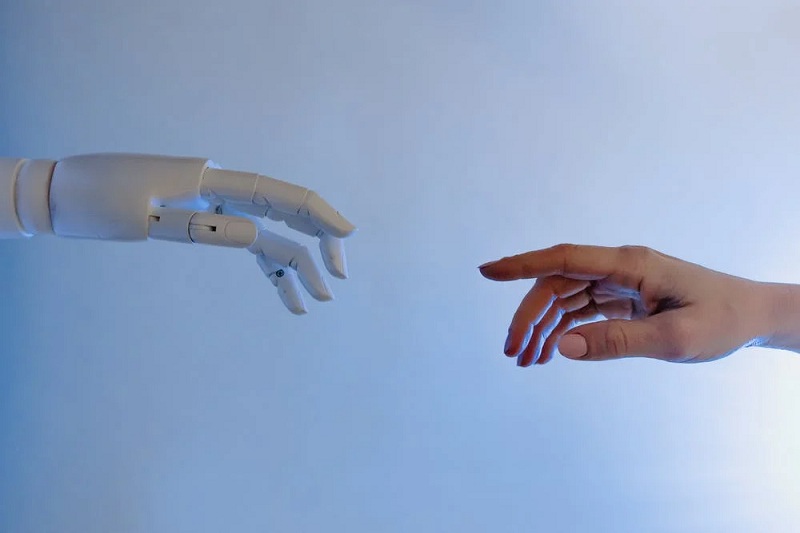
Robots come into our lives slowly but steadily. We can speak with bots to make orders, automatic calls inform us about promos, autopilot on cars is real. What else can Artificial Intelligence offer? Maybe, it’s doing homework for you and planting your garden too? Not too soon, despite the fact that some AI’s can write texts already. What AI can do in the education sector let’s learn from the article.
Artificial intelligence, also called machine learning, is changing how K-12 and higher-education classrooms are run. Some wonder if robotics is a passing trend or a way for teachers and students to learn differently. Columbia University Teachers College hosted a conference about artificial intelligence for K12 educators.
Borhene Chakroun, director at UNESCO’s division for policies & lifetime learning systems, opened the event by extolling AI technology’s potential to “profoundly transform every aspect” of teaching and learning.
He acknowledged the potential effects of AI and how it will change how humans and computers work together. Stakeholders are struggling to understand whether AI will eliminate the teaching profession or replace it with other tasks. The answer to that question is ”too early for us to know”.
He recommended that a “regulatory system” be established to oversee AI technology and promote innovation, in order to minimize negative effects. Chakroun suggested that such policies be designed to protect students’ privacy and encourage transparency in AI algorithms. These datasets contain data about human behavior and are used to develop AI functions.
Hod Lipson, a roboticist/mechanical engineering engineer, was the keynote speaker. He spoke out about how AI has evolved in waves. It was 50 years ago that the first version of AI was developed. This system included logic, rules, reasoning. He claimed that the AI industry is entering an era of cognitive computing. This is when machines will be able to mimic human behavior. The current system is built on pattern recognition data, natural language processes, and natural word processing.
Lipson, Columbia University’s Creative Machines Lab director stated that each wave brings a new capability. “We now have machines which understand images, audio, and video for the first-ever time in human history. This is something we didn’t expect five years ago.
While he sees an AI future in which AI technology can talk to humans, it might be some time before such an AI tool is commercially viable. He demonstrated this with two bots using AI tools, Alexa (Google Home) and Google Home. They are unable to understand or infer nuance. He stated that they cannot offer “canned conversation” and provide information such as weather forecasts and locations of restaurants.
Expert panel members examined the impact of AI on K12 schools and postsecondary schools. They also looked at various AI applications in learning environments like online assessments that assess reading abilities and detect plagiarism.
Sandra Okita is an associate professor in technology education at Teachers College. She said that AI holds promise as a tool for monitoring student progress and gathering information about the ones who are doing well. An AI bot can detect patterns in student progress and allow instructors to intervene when necessary.
Stefania Druga is the founder of Afrimakers. She believes that AI can be used to support hands-on learning for younger grades. Over three years she worked with elementary students, conducting a study that used Cognimates as an AI education platform.
Students developed bots that play games like Rock, Paper, Scissors, as well as gaming apps that feature characters that reflect their ethnicity. Druga stated that AI’s success is due to the many projects created by students.
Druga states that teaching children to program AI bots has many benefits. Druga claimed that children had a changed perception of technology. They saw the benefits of learning to program AI robots.
Druga stated that students understood the AI concepts quickly. Her research found that students understood the concepts better than their programming experience and how much time they spent coding. This was dependent on the number of interactions students had with other coders, as well as how long it took to test and analyze their designs.
She predicted that AI tools would continue their growth and that the role of teachers will change. Future educators were advised to learn from students, rather than be the holder and master of knowledge.
Margaret Price, Microsoft’s principal design strategist, suggested that developers and technologists design AI platforms with inclusion in their minds. She stated that tools need to be adaptable to different contexts and abilities. Developers may include end-users in their design processes, or collaborate with students to avoid biases.
Price said that designing for inclusion starts with recognizing who might be excluded. “Ultimately, our goal to find equitable solutions which can really drive positive outcomes is our goal.”
A beautiful and lively garden can add life to your outdoor space and make it… Read More
Teams working in marketing and digital are familiar with the challenges of striking a balance… Read More
DafaNews, a prominent platform providing real-time sports updates and in-depth analysis, has launched “The Game… Read More
Travel has a way of enriching the soul, offering experiences that shape perspectives and create… Read More
The commercial real estate industry is changing rapidly, driven by technological advancements, sustainability initiatives, and… Read More
Zoom Tasks, a new AI-powered task management tool integrated into Zoom Workplace, has been formally… Read More